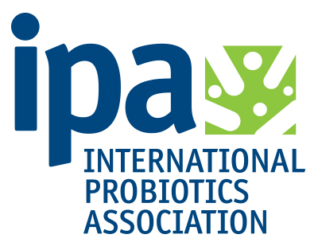Marked by persistent infrequent and/or difficult stool passage, constipation can lead to bloating, flatulence, and more serious consequences including anal fissure and fecal impaction.
Whereas poor lifestyle practices and multiple disorders can cause constipation, involvement of the gut microbiota suggests a role for probiotics in alleviating the condition. In this article, IPA will explore the literature for evidence of their effectiveness and potential clinical applications.
Constipation, in brief
The reported prevalence of constipation worldwide ranges widely; however women and the elderly are known to experience increased incidence.
Chronic constipation (longer than three months) is commonly divided into two categories: primary and secondary.
- Primary: Caused by intestinal motility and secretion disorders, visceral sensitivity changes, pelvic muscle dysfunction, or dysfunction of the enteric nervous system.
- Secondary: Resulting from diseases (e.g. Parkinson’s disease, colorectal cancer); medications (e.g. opioids, antihypertensives); or diet (insufficient water or fiber).
Management of constipation begins with dietary changes, stimulant and/or osmotic laxatives, and proceeds to other medications if needed.
Constipation and Gut Microbiota
Gut microbiota disturbances (dysbiosis) are associated with primary constipation in both animals and humans. Patients with constipation have been observed to have decreased beneficial bacteria and increased potential pathogens. In addition, metabolites of bacterial fermentation such as short-chain fatty acids, bile acids, and methane may trigger the release of gut hormones and are thought to be significant factors in this disorder.
Probiotics in constipation
Probiotics may be beneficial in constipation through several mechanisms of action:
- Probiotics may alter gut microbiota, reducing or correcting dysbiosis seen in constipation.
- Probiotics can lower the pH of the colon by increasing the production of lactate and short-chain fatty acids. A lower pH enhances peristalsis in the colon, which can reduce the colonic transit time.
- Specific probiotics may beneficially impact the function of gut neurotransmitters such as serotonin that regulate peristalsis in the gastrointestinal tract.
Quite a few studies suggest the beneficial effects of probiotics on the consequences of constipation, however varying methodologies cloud the analyses.
Animal studies
In a 2022 review, most of the animal studies (mainly mice) evaluated a single probiotic strain mainly of Lactobacillus or Bifidobacterium genera. The reviewers concluded, “Probiotic supplementation seems to improve the GI transit/rate in animal models, as well as the number of stools, stool water content, and intestinal peristaltic movements.” However, supplementation of Lactiplantibacillus plantarum in mice yielded conflicting results thought to be due to study methods.
Human studies
In the above-mentioned review, of the 19 studies evaluating single-strain probiotics, strains of Bifidobacterium lactis and Lacticaseibacillus casei were most often used. Seven studies assessed multistrain probiotics with Lactobacillus acidophilus and B. lactis strains used most often.
The authors found that relative to multistrain probiotics, single-strain probiotics appeared to “have more effect on defecation frequency, stool consistency, and constipation-related symptoms.” L. casei probiotics decreased several constipation symptoms while B. lactis probiotic mainly benefited defecation frequency.
Considerations in the use of probiotics in constipation
As stated above, the species and strains of probiotics may determine the effect. Other aspects that have been studied include the dose, duration, time of day, and delivery format of probiotic intake.
Dose
Both high and low-dose probiotic supplementation appeared to have a positive effect on constipation-related symptoms in an early study in humans. In a 2018 trial using a strain of B.lactis, no significant difference was observed between the high and low dosage levels on stool frequency and consistency or transit time.
Duration
Most human studies assessing probiotics in constipation opt for a longer treatment duration (≥ 28 days) instead of a shorter duration, therefore little data is available to determine the optimum duration. However, one recent systematic review and meta-analysis supplementing B.lactis observed a better outcome with a shorter duration (less than 14 days) on colonic transit time.
Time of day
The best time to take probiotics for constipation has not been determined. A slim amount of evidence suggests that probiotics may survive better if given before a meal. Fortunately, time may be less relevant now that manufacturers have developed advanced techniques to protect probiotics through the harsh environment of the stomach.
Delivery method
Probiotic effectiveness may be related to the delivery matrix. Capsules, tablets, powders, gummies, suppositories, foods, and beverages are all transport methods. There is little research comparing their relative effectiveness in constipation.
Takeaway
Probiotics can potentially benefit constipation through various mechanisms, including modifying gut microbiota, altering gut characteristics, lowering colon pH, and impacting gut neurotransmitters.
Several studies indicate the beneficial effects of probiotics on constipation-related symptoms. Human studies evaluating single-strain and multi-strain probiotics have demonstrated positive effects on constipation-related outcomes. Additionally, the species and strains of probiotics, along with the dose, duration of treatment, timing of intake, and delivery format, should be considered when using probiotics for constipation management.
Probiotics are only one leg of the stool (pun intended) in conservative constipation management. Diet and exercise may also modulate the gut microbiota and contribute to better outcomes in constipation.
Key references
Ait-Belgnaoui, A et al. “Lactobacillus farciminis treatment suppresses stress induced visceral hypersensitivity: a possible action through interaction with epithelial cell cytoskeleton contraction.” Gut vol. 55,8 (2006): 1090-4. doi:10.1136/gut.2005.084194
Araújo, Maísa Miranda et al. “Effects of Bifidobacterium animalis subspecies lactis supplementation on gastrointestinal symptoms: systematic review with meta-analysis.” Nutrition reviews vol. 80,6 (2022): 1619-1633. doi:10.1093/nutrit/nuab109
Araújo, Maísa Miranda, and Patrícia Borges Botelho. “Probiotics, prebiotics, and synbiotics in chronic constipation: Outstanding aspects to be considered for the current evidence.” Frontiers in nutrition vol. 9 935830. 8 Dec. 2022, doi:10.3389/fnut.2022.935830
Bharucha, Adil E et al. “American Gastroenterological Association technical review on constipation.” Gastroenterology vol. 144,1 (2013): 218-38. doi:10.1053/j.gastro.2012.10.028
Bharucha, Adil E, and Brian E Lacy. “Mechanisms, Evaluation, and Management of Chronic Constipation.” Gastroenterology vol. 158,5 (2020): 1232-1249.e3. doi:10.1053/j.gastro.2019.12.034
Cao, Ya-Nan et al. “Lactobacillus acidophilus and Bifidobacterium longum supernatants upregulate the serotonin transporter expression in intestinal epithelial cells.” Saudi journal of gastroenterology : official journal of the Saudi Gastroenterology Association vol. 24,1 (2018): 59-66. doi:10.4103/sjg.SJG_333_17
Dimidi, Eirini et al. “The effect of probiotics on functional constipation in adults: a systematic review and meta-analysis of randomized controlled trials.” The American journal of clinical nutrition vol. 100,4 (2014): 1075-84. doi:10.3945/ajcn.114.089151
Forootan, Mojgan et al. “Chronic constipation: A review of literature.” Medicine vol. 97,20 (2018): e10631. doi:10.1097/MD.0000000000010631
Ibarra, Alvin et al. “Effects of 28-day Bifidobacterium animalis subsp. lactis HN019 supplementation on colonic transit time and gastrointestinal symptoms in adults with functional constipation: A double-blind, randomized, placebo-controlled, and dose-ranging trial.” Gut microbes vol. 9,3 (2018): 236-251. doi:10.1080/19490976.2017.1412908
Khalif, I L et al. “Alterations in the colonic flora and intestinal permeability and evidence of immune activation in chronic constipation.” Digestive and liver disease : official journal of the Italian Society of Gastroenterology and the Italian Association for the Study of the Liver vol. 37,11 (2005): 838-49. doi:10.1016/j.dld.2005.06.008
Miller, Larry E et al. “Effects of probiotic-containing products on stool frequency and intestinal transit in constipated adults: systematic review and meta-analysis of randomized controlled trials.” Annals of gastroenterology vol. 30,6 (2017): 629-639. doi:10.20524/aog.2017.0192
Quigley, Eamonn M M. “Bacteria: a new player in gastrointestinal motility disorders--infections, bacterial overgrowth, and probiotics.” Gastroenterology clinics of North America vol. 36,3 (2007): 735-48, xi. doi:10.1016/j.gtc.2007.07.012
Salminen, S, and E Salminen. “Lactulose, lactic acid bacteria, intestinal microecology and mucosal protection.” Scandinavian journal of gastroenterology. Supplement vol. 222 (1997): 45-8. doi:10.1080/00365521.1997.11720717
Waller, Philip A et al. “Dose-response effect of Bifidobacterium lactis HN019 on whole gut transit time and functional gastrointestinal symptoms in adults.” Scandinavian journal of gastroenterology vol. 46,9 (2011): 1057-64. doi:10.3109/00365521.2011.584895
Wang, Jun-Ke, and Shu-Kun Yao. “Roles of Gut Microbiota and Metabolites in Pathogenesis of Functional Constipation.” Evidence-based complementary and alternative medicine : eCAM vol. 2021 5560310. 21 Sep. 2021, doi:10.1155/2021/5560310
Authorship
The International Probiotics Association (IPA) is a global non-profit organization bringing together, through its membership, the probiotic sector's stakeholders, including but not limited to academia, scientists, healthcare professionals, consumers, industry, and regulators. The IPA's mission is to promote the safe and efficacious use of probiotics worldwide. Holding NGO status before Codex Alimentarius, the IPA is also recognized as the unified "Global Voice of Probiotics" around the world.
Clare Fleishman, MS RDN, bridges the gap between science and health across most platforms: major newspapers, magazines, books (Globesity), workshops, social media, and websites. In 2010, she launched www.ProbioticsNow.com to share the cascade of new discoveries in the microbiome. Always amazed at this "forgotten organ," Fleishman also creates white papers, blogs, videos, and social media for the International Probiotics Association. She recently published Fertility: Why Microbes, Weight & Nutrition Matter.
IPA disclaimer: Probiotics have different characteristics, qualities and actions that are unique to the specific strain or combinations. The label should identify the genus, species and strain for each microorganism in the product (i.e. Lactobacillus acidophilus IPA001). If a claim pertaining to individual strains or a blend of strains contained in the product is made, the manufacturer should maintain evidence that the amount(s) provided in the product is consistent with the scientific evidence in support of the claim.










